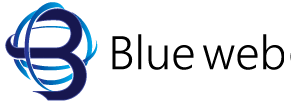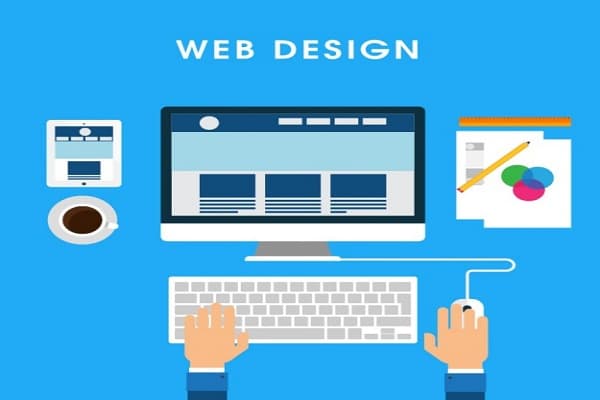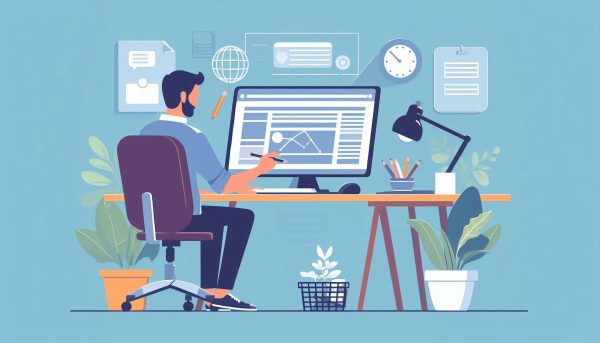
Web Design in Simple Language
Before we get into the job description and skills required, it’s best to provide a clear definition of web design. Web design is a set of activities and skills that lead to creating the look, structure, and user experience (UX) of a website. This design can include color schemes, fonts, images, element layout, navigation, and many other graphic components.
Good web design should be such that it attracts the visitor while at the same time creating a simple, fast, and effective user experience. This means that the design should not only be beautiful, but also purposeful, usable, and aligned with the brand’s goals.
فهرست مطالب
ToggleWhat is the job of a web designer?
A web designer is someone who designs the user interface (UI) and sometimes the user experience (UX) of websites. But in practice, the job of a web designer goes beyond just making pages look pretty. Below, we will take a comprehensive look at his or her most important tasks and responsibilities:

1. Visual Design
One of the first tasks of a web designer is to create a beautiful visual design that is consistent with the brand identity. This includes the following:
- Choosing the right colors (in accordance with the brand and color psychology)
- Choosing legible fonts that are compatible with the digital environment
- Using relevant and high-quality images and icons
- Effectively arranging elements on the page to attract and guide the user
The goal of visual design is to create a sense of trust and attract the audience at first glance.
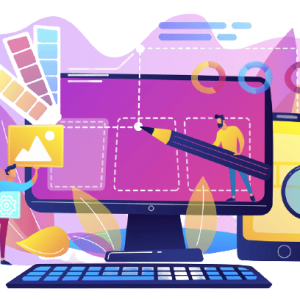
2. Responsive Design
In this day and age, users use different devices such as mobile phones, tablets, and laptops to visit websites. For this reason, the design must be displayed correctly on all screen sizes.
A web designer must use the principles of Responsive Design so that the website works properly on all devices and has a suitable visual effect.

3. UI Design
The user interface is what the user directly interacts with. Buttons, forms, menus, tabs, and other interactive components are designed by the web designer. UI design should:
- Be simple and uncomplicated
- Guide the user to the desired action (for example, purchase, register, or contact)
- Be visually consistent and unified
4. Work closely with the development team (Developers)
In many projects, the web designer collaborates with front-end and back-end developers. The designer prepares the graphic design of the pages, and the developer converts it into an actual website using coding. Therefore, it is essential for the designer to be familiar with languages such as HTML, CSS, and JavaScript in order to create implementable designs.
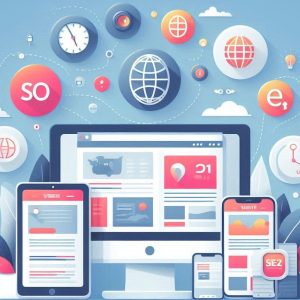
5. Understand UX principles and user psychology
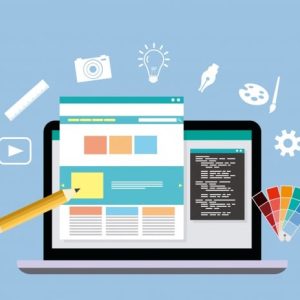
Understanding user behavior, their path through the website, points of confusion or fatigue, and designing effectively to address these problems is part of a web designer’s job. The design should get the user to their goal as quickly as possible. Therefore, understanding the principles of user experience (UX) is of utmost importance.
6. Adhere to accessibility principles
A professional web designer should provide designs that are usable by all users, including those with physical or visual disabilities. This includes choosing appropriate colors for colorblind people, using legible fonts, and designing intelligible for screen readers.

Common Web Design Tools
Web designers typically use the following graphic and UI design tools:
- Figma: UI design and prototyping
- Adobe XD: Interaction design and wireframes
- Sketch: Popular on macOS
- Photoshop and Illustrator: For advanced graphic design
- Zeplin / Avocode: For handing off designs to developers
Skills needed to become a web designer
To enter the job market as a professional web designer, one must develop a set of technical and soft skills. Slow:
Technical Skills:
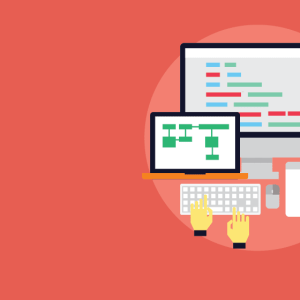
- Mastery of graphic design principles
- Familiarity with HTML, CSS, and JavaScript
- Ability to use UI design tools
- Familiarity with CMSs like WordPress and plugins like Elementor
- Understanding SEO principles in design (such as URL structure, site speed, and mobile-friendliness)
Soft skills:
- Creativity and innovation
- Attention to detail
- Problem solving ability
- Communication skills to work with the client and development team
- Time management and delivering projects on time
Difference between web designer and web developer
Many people confuse these two roles, while there are clear differences between them:
Web designer | Web Developer |
Designing the appearance and user interface of the site | Implementing the site with coding |
Focusing on user experience | Focusing on technical performance and databases |
Using design software | Using programming languages |
| Skills in aesthetics and graphics | Skills in logic, algorithms, and coding |
However, in smaller projects, sometimes one person takes on both roles, which is called a Full-stack Designer.
A closing statement from the Blueweb team
Finally, if we want to briefly answer what a web designer does, we must say: he is someone who brings art and technology together to create a beautiful, functional, fast, and user-oriented website. In today’s competitive world, professional website design can change the fate of a business.
Bloob, relying on the knowledge and experience of its design and development team, helps you have a professional, SEO-friendly website that meets current standards. If you are looking for a website design, contact us now.
If you are interested in web design or want to entrust your business website design to a professional team, contact us at Blueweb. Our team is ready to accompany you from idea to implementation. “Request a Free Consultation“
Original Publication Date: 1400/09/29Update Date: 1404/01/17